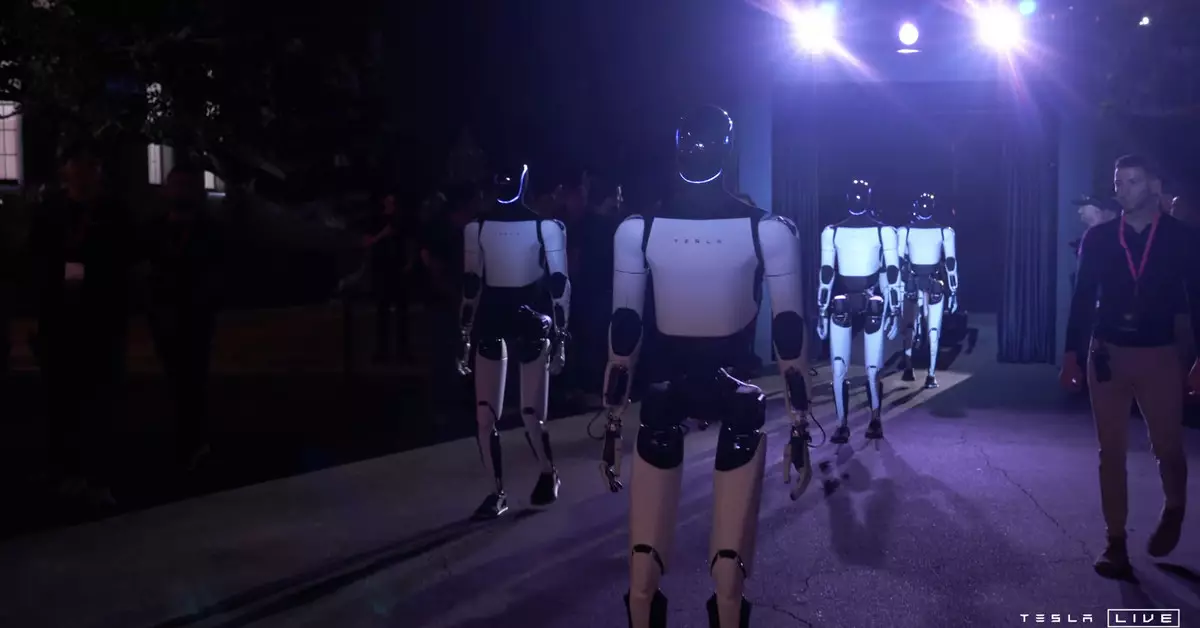Tesla has long been associated with advancements in electric vehicles, but it is now making significant strides in the realm of humanoid robotics. At a recent showcase dubbed the Cybercab event, the company unveiled its latest creation: a robotic assistant named Optimus. This ambitious project positions the Optimus robots as potential helpers in everyday human tasks, suggesting a paradigm shift in how we view robotics in our daily lives.
Tesla’s CEO, Elon Musk, took the stage to present his grand vision of a future where humanoid robots seamlessly integrate into our lives. He expressed confident assertions about the capabilities of the Optimus robots, claiming they would be able to perform a diverse array of tasks. From mundane chores like watering plants to more complex responsibilities such as babysitting and walking dogs, the breadth of tasks suggested by Musk was both ambitious and slightly overwhelming. He even estimated the robots could be priced between $20,000 to $30,000 in the long term, projecting an image of availability to the general public.
However, the live demonstration of the Optimus robots at the event was a mixed bag. While Musk painted an exciting picture of future interactions, the reality during the showcase was somewhat less impressive. The robots were mainly seen performing minimal interactions, such as waving at guests or holding drinks without engaging in any complex tasks. A few moments of interest included one robot handing out gift bags and playing rock-paper-scissors with attendees. This showcase, while entertaining, raised questions about the practicality and current functionality of these robots.
Musk’s ambitious robotic dreams began in earnest with the initial announcement back in 2021, which was met with skepticism. After presenting a comical demonstration featuring a man in a robot suit, it was easy to dismiss the project as far-fetched. However, a notable progression was observed as Tesla revealed a more refined prototype in 2022 that could move with more stability. As promised, Musk indicated that we could expect more functional versions capable of “useful tasks” by late 2023, with aspirations for these robots to be available for external purchase by 2024.
The introduction of humanoid robots like Optimus could redefine various sectors, from domestic assistance to customer service roles. However, consumer perception will play a crucial role in determining the market’s reception of such products. The initial demonstration’s lack of substantial capabilities raises concerns over the practicality of these robots. Moving forward, Tesla must bridge the gap between expectation and reality to secure a foothold in the emerging robotics market.
Tesla’s venture into humanoid robotics is a fascinating development that warrants attention. While the potential applications of the Optimus robot are exciting, the current state of the technology seems to fall short of Musk’s lofty promises. As the company continues to develop its robots, one can only hope that they can deliver on the bold claims made during the presentation, transforming the vision of personal robotic assistants from a futuristic fantasy to an everyday reality.

